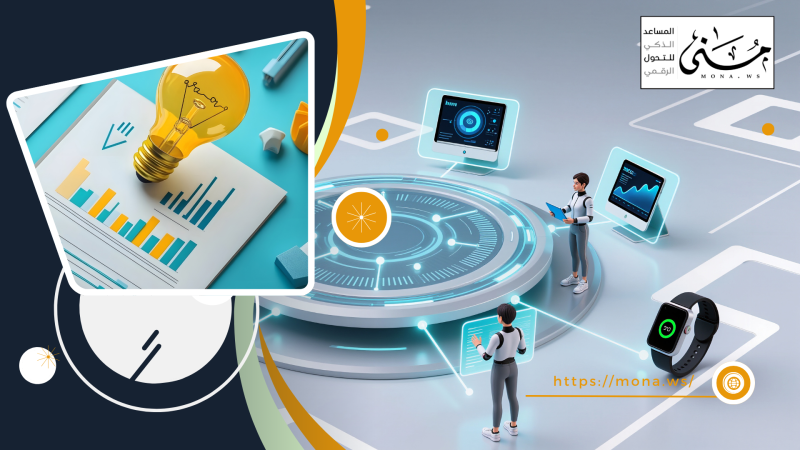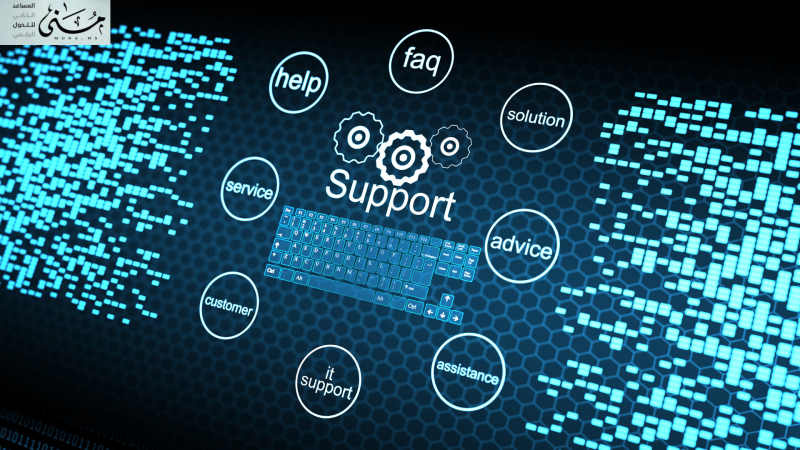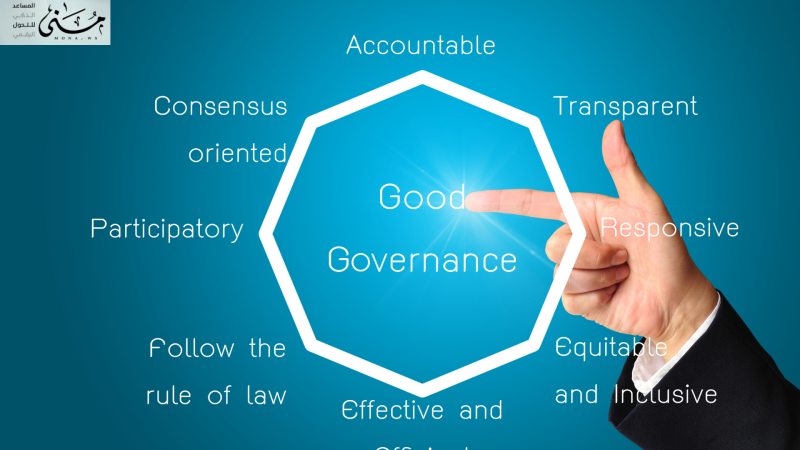Why are meetings considered a governance tool and not just administrative coordination?
In the contemporary workplace, meetings are no longer just a routine process for exchanging information. They have become one of the most important tools of corporate governance, especially in organizations seeking to improve transparency, leverage accountability, and enhance decision-making efficiency. Therefore, it's no surprise that the phrase "meetings as a governance tool" appears in audit and governance reports as an indicator of an organization's commitment to a sound management system.
An organization that holds regular, organized meetings, maintains clear minutes, and follows up on its executive decisions is an organization that applies the essence of governance in a practical and cumulative manner.
Continue reading the article to learn more information.
How did meetings become a governance tool?
Meetings as a governance tool gain their power from being the only platform where representatives from different departments meet to review performance, discuss deviations, make decisions, and record detailed notes on ongoing operations.
This means that any failure in the management of these meetings is a direct failure in the governance system itself. Therefore, improving the quality of meetings is not only a matter of administrative effectiveness, but rather a fundamental step towards establishing a true governance culture within the organization.
Therefore, transforming meetings as a governance tool from a traditional practice to an effective one requires more than just an agenda. Rather, it requires a clear digital structure that is continuously recorded, tracked, and evaluated. Hence, the importance of modern digital systems such asDocSuite Meeting, which transforms meetings from traditional to integrated systems that integrate decisions, reports, and executive outcomes.
Meeting Organization Standards in a Governance Environment
For meetings to be considered a truly effective governance tool, they must undergo an integrated process of preparation, implementation, documentation, and follow-up. Any defect in any link in this chain renders the meeting deprived of its governance value and reduced to a mere formal activity..
This series begins by defining the meeting's objectives: Is it for decision-making? Performance evaluation? Task assignment? Clarity of purpose is the first requirement for making meetings an effective governance tool.
The next step is to prepare a detailed agenda, including the topics to be discussed, the time allocated for each item, who will present it, and whether decisions are required or merely recommendations. This agenda should be sent to attendees in advance so they can prepare and provide their inputs thoughtfully. This enhances the professionalism of the session and strengthens the impact of meetings as a governance tool within the organization.
Then comes the implementation phase, which requires clear management skills from the person in charge of running the meeting. Here, it is important to document every intervention, the sequence of discussions, points of disagreement, recommendations, and final outcomes. Meeting minutes play a crucial role in enhancing transparency and ensuring that agreed-upon points are not forgotten. The more documented and organized the meeting minutes are, the greater the value of the meetings as a governance tool.
Finally, comes the follow-up phase, which demonstrates the true difference between an effective meeting and a formal one. Meetings are useless if they are not linked to follow-up reports, implementation officials, and specific completion dates. This is the essence of meetings as a governance tool: transforming discussions into actual decisions that can be tracked and their results analyzed.
Common problems that weaken the role of meetings as a governance tool
Despite the importance of meetings as a means of implementing governance, many organizations unknowingly undermine this tool. Among the most prominent recurring problems that affect the effectiveness of meetings as a governance tool are:
lack of a clear agenda:Which leads to deviating discussions and wasting time.
Lack of accurate documentation:Where superficial notes are made without recording what was agreed upon.
Lack of actual follow-upDecisions remain confined to papers and are not transformed into executive tasks.
Repeating topics without resolutionThis makes the meeting lose its value as a decision-making tool.
Reliance on traditional means:such as email or paper files in organizing meetings.
To get out of this chaos, we must promote a culture of viewing meetings as a governance tool rather than a temporary administrative tool. This requires a true digital transformation that makes every meeting a starting point for clear decisions, specific responsibilities, and programmed follow-up reports. This is where the role of...DocSuite Meeting is an intelligent system that integrates all meeting elements into a single, integrated digital environment.
How to enhanceDocSuite Meeting: The role of meetings as a governance tool?
Given the complexity of administrative processes and the multiplicity of stakeholders, the need arises for integrated systems that manage meetings not only at the level of preparation and documentation, but also at the level of linking them to real outcomes. This is where the value of...DocSuite Meeting is a system that redefines what meetings mean as a governance tool.
Through an easy-to-use interface, it allowsDocSuite creates an interactive agenda, assigns attendees, sends invitations automatically, and links each meeting item to actionable outcomes. It also provides the ability to write minutes of meetings directly during the session, with the ability to vote on decisions, and assign responsibility for each action item.
But most importantly,DocSuite Meeting doesn't just document meetings; it automatically connects them to task systems, reports, and alerts, turning each meeting into a launching pad for real, actionable action plans. This makes meetings a living corporate governance tool, not just a bureaucratic activity.
Thanks to the periodic evaluation system, each organization can measure its compliance with meeting recommendations and determine the rate of completion for each item on which a decision has been made. This makes governance more transparent and objective, thus linking the administrative structure, periodic reports, and accountability through a single portal: meetings as a governance tool.
Do meetings drive governance or chaos?
Organizations seeking to leverage meetings as a governance tool must periodically evaluate the quality of these meetings, in terms of their number, content, attendance, accuracy of minutes, and the rate of decision implementation. This evaluation is not an administrative luxury, but rather an organizational necessity that demonstrates the organization's commitment to governance principles.
In effective internal evaluation, it's not enough to count the number of meetings held, but rather to analyze their outcomes: How many decisions were implemented? How many items were repeatedly raised? Is there a digital system that tracks meeting recommendations? Is attendance evaluated based on actual participation rather than formal attendance? These are all questions that reveal whether meetings are a governance tool or merely traditional administrative sessions.
Responsible organizations are moving toward performance indicators for governance through meetings, such as: the percentage of recommendations implemented, the attendance rate of board or committee members, the speed with which decisions are converted into actionable tasks, the accuracy of meeting minutes, and the extent to which critical decisions are documented.
All this cannot be done without systems such as:DocSuite Meeting enables organizations to transform every meeting into an efficient and transparent management unit.
Meeting-based governance
In activating meetings as a governance tool, the importance extends beyond organizing sessions and documenting their outcomes. It also extends to building an administrative system that enhances the integration of roles within each meeting. Every effective meeting must include clearly defined stakeholders: a meeting coordinator, a minutes' recorder, those responsible for each agenda item, and monitors responsible for implementing decisions.
This distribution establishes the meaning of governance, as responsibility is linked to decisions, roles are clearly defined, and meetings, as a governance tool, become a direct application of the principles of good management.
What makes this model even more powerful is its integration with digital tools that facilitate monitoring of this integration and prevent interference, for example, when using a system such asWith DocSuite Meeting, each meeting participant can see only the items they are responsible for and receive periodic notifications about tasks arising from the meeting, preventing accountability or decisions from slipping into the administrative void.
In this way, meetings become a governance tool that is not just a discussion platform, but a digital accountability network based on personalization and tracking.
Meetings that don't clearly allocate responsibilities often become platforms where accountability is lost. How many organizations have discussed an issue multiple times without progress, simply because the person responsible for implementation was not identified? Therefore, meetings must be managed as a governance tool with a methodology that makes each decision a starting point for a specific task, undertaken by a known official, at a specific time.
This is the true meaning of meeting-based governance, enabled by advanced digital systems, where data can be analyzed, progress measured, and shortcomings identified with objectivity and transparency.
Meetings are not just weekly appointments to exchange views or review performance. They are a critical executive oversight tool that represents the core of corporate governance. When managed haphazardly, they waste time and increase chaos. However, when managed effectively, they become a tool for controlling performance, motivating teamwork, and ensuring transparency.
 الاجتماعات كأداة حوكمة: هل تُدار بفاعلية في مؤسستك؟
الاجتماعات كأداة حوكمة: هل تُدار بفاعلية في مؤسستك؟










Comments
Add New Comment